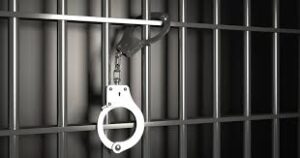GS2 – Governance

Context:
The Supreme Court recently ordered the release of prisoners detained beyond their sentence, highlighting systemic flaws in prison governance.
Current Prison Governance Framework:
- Federal Structure: States manage prisons with national oversight standards.
- Constitutional Entry: Prisons fall under State List, Entry 4, Seventh Schedule.
- Primary Law: Prisons Act, 1894, supplemented by state prison manuals.
- Administration: State Home Departments oversee operations and resource allocation.
- Oversight: Courts and NHRC inspections ensure inmate rights and procedural safeguards.
- Advisory Body: Bureau of Police Research and Development (BPR&D) provides guidelines for uniform prison standards.
- Legal Aid: National Legal Services Authority (NALSA) offers free legal services.
- Special Laws: Juvenile Justice Act & Probation of Offenders Act facilitate non-custodial sentencing.
Rationale for Urgent Reforms:
- Transform prisons from punitive facilities to rehabilitative institutions.
- Uphold fundamental rights (Article 21 – dignity; Article 14 – equality).
- Reduce recidivism through rehabilitation and skill-building.
- Address overcrowding via probation, parole, and alternative sentencing.
- Ensure legal compliance and prevent unlawful detention.
- Support reintegration into society and strengthen public safety.
- Fulfil international commitments, particularly compliance with UN Mandela Rules (humane treatment of inmates).
Structural and Operational Deficiencies:
- Overcrowding: Occupancy often exceeds 130%, worsening health, hygiene, and safety.
- Undertrial Crisis: 77% of inmates are undertrials, prolonging detention.
- Infrastructure Gaps: Dilapidated facilities compromise safety, dignity, and rehabilitation.
- Health Challenges: Limited medical and mental health services increase risks.
- Gender Sensitivity: Women inmates lack adequate maternity care, sanitation, and security.
Government Interventions:
- E-Prisons Project: Digital inmate records prevent detention beyond legal term.
- Open Prisons: Semi-open facilities facilitate reintegration and reduce security costs.
- Legal Aid Clinics: Expedite trials for indigent inmates.
- Swachh Jail Campaign: Improves hygiene and living conditions.
- State Innovations: Kerala cafeterias and Tihar prison industries enhance income and self-reliance.
Global Models for Guidance:
- Scandinavian Model (Norway): Open cells and autonomy to foster responsibility and dignity.
- Digital Monitoring (South Korea): GPS anklets replace custody for low-risk offenders.
- Education Programs (USA): Accredited courses inside prisons.




